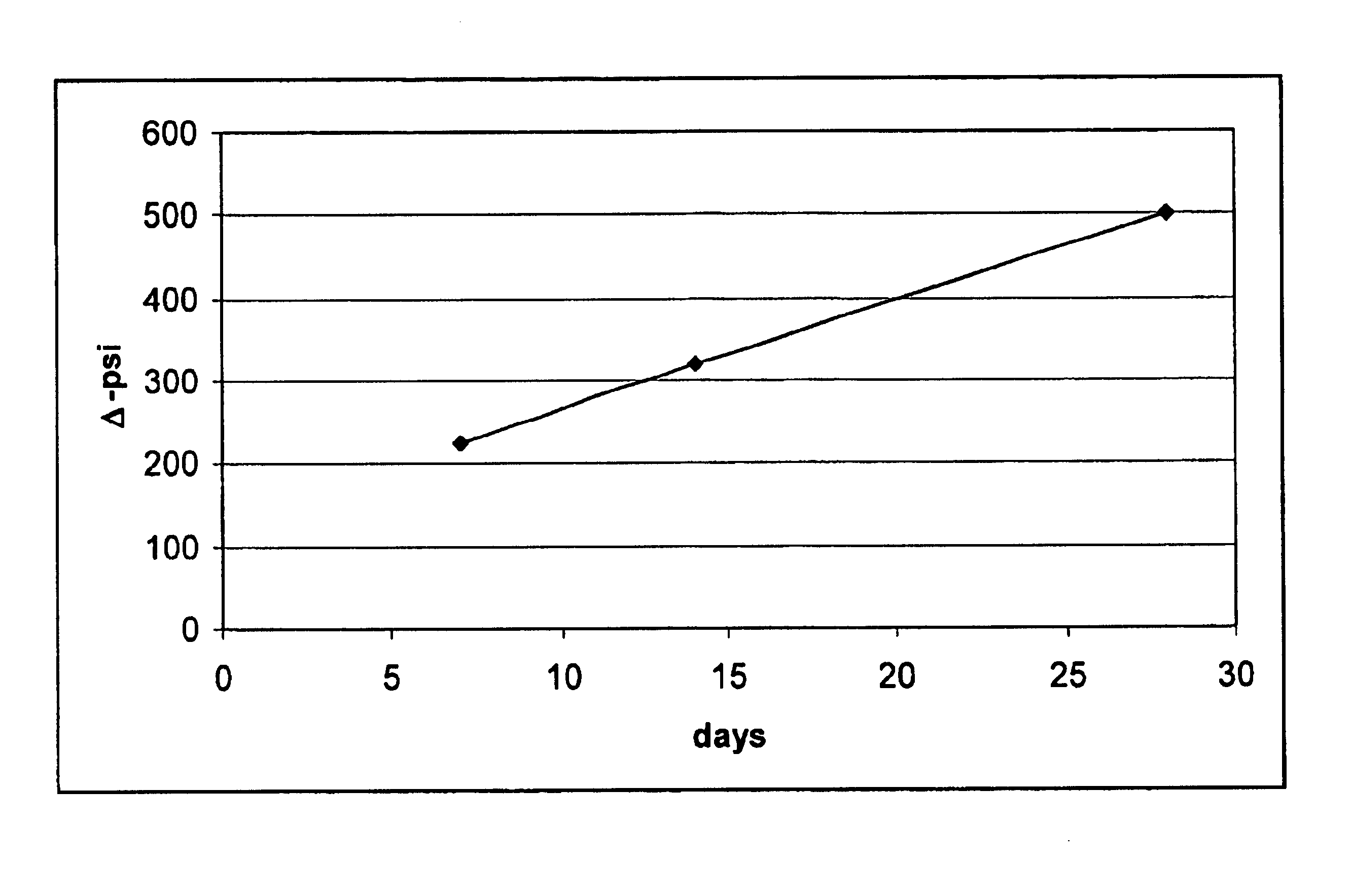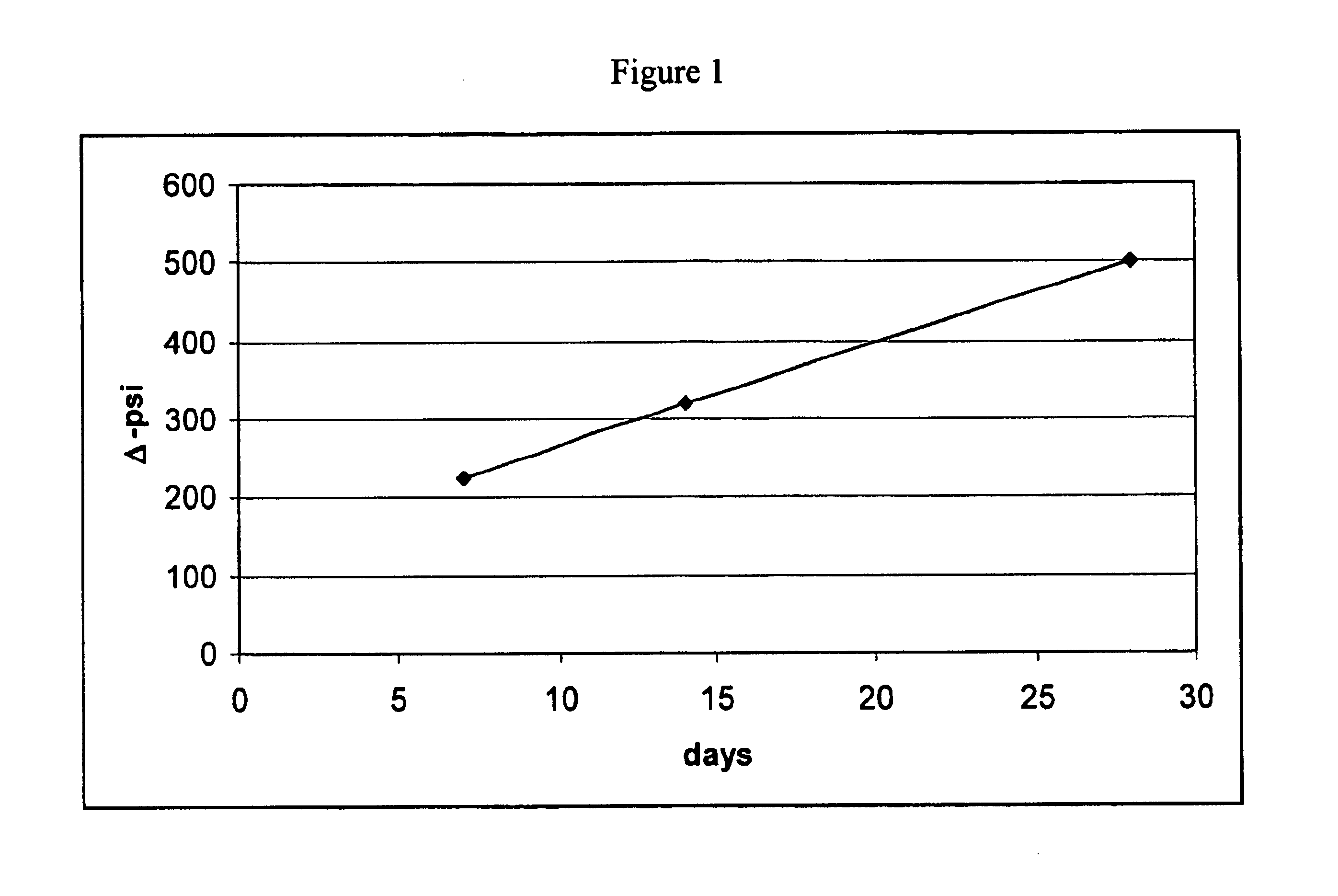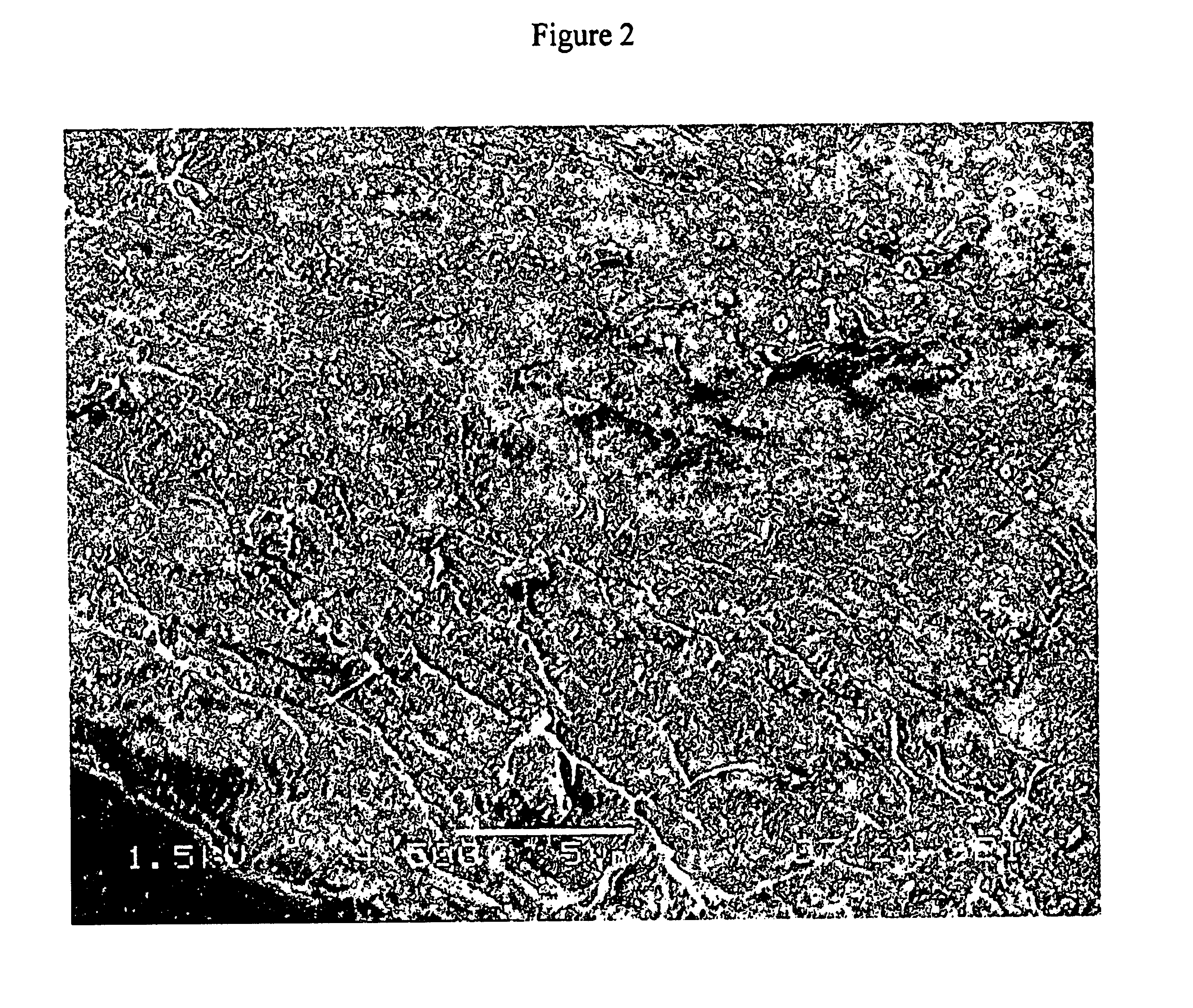Cementitious material reinforced with chemically treated cellulose fiber
a technology of cementitious materials and cellulose fibers, which is applied in the direction of solid waste management, transportation and packaging, sustainable waste treatment, etc., can solve the problems of physical degradation of cellulosic fibers and limited value of cellulosic materials in many compositions, and achieve the effect of improving the retention of fiber strength
- Summary
- Abstract
- Description
- Claims
- Application Information
AI Technical Summary
Benefits of technology
Problems solved by technology
Method used
Image
Examples
example 1
Southern Softwood Kraft Fibers (SSK)
[0127]In the present Example, wood chips of predominantly slash pine species were pulped through a Kraft process to a permanganate number (K number) of about 17 ml as determined by the procedure described in TAPPI method T 214. These fibers were washed and screened for quality and then bleached with a D-EOP-D-Ep-D process to an ISO brightness of about 86 percent. Viscosity, as measure by T 230 om-94, was about 16 cP.
[0128]These bleached cellulose fibers were diluted with water to a slurry consisting of 0.9 parts fiber per 100 parts slurry at a pH of 6.5. The resultant slurry was continuously dewatered on a sheeting machine where the sheet was formed at a 1.0 rush / drag ratio, couched, then pressed and densified using three stages of wet pressing to 48 parts fiber per 100 parts total. The sheet was dried using conventional drum dryers to a solids content of 94 percent. The reeled pulp was then processed into individual rolls. The sheets were then de...
example 2
Treated Fibers (TF1): Treatment with Polyvalent Metal and Weak Acid
[0129]Wood chips of predominantly slash pine species were pulped through a Kraft process to a permanganate number (K number) of about 17 ml as determined by the procedure described in TAPPI method T 214. These fibers were washed and screened for quality and then bleached with a D-EOP-D-Ep-D process to an ISO brightness of about 86 percent. Viscosity as measure by T 230 om-94 was about 16 cP.
[0130]These bleached cellulose fibers were diluted with water to a slurry consisting of 4.5 parts fiber per 100 parts slurry. To this slurry, 9.36 parts aluminum sulfate hydrate (Al2(SO4)3*14H2O) per 100 parts fiber was added. The aluminum sulfate hydrate was obtained from General Chemical Corporation. The resulting slurry had a pH of 3.2. After 25 minutes of mixing, 3.0 parts sodium hydroxide per 100 parts fiber were added along with sufficient water to provide 0.9 parts fiber per 100 parts slurry at a pH of 5.7. The temperature ...
example 3
Treated Fibers (TF2): Treatment with Polyvalent Metal
[0131]Wood chips of predominantly slash pine species were pulped through a Kraft process to a permanganate number (K number) of about 17 ml as determined by the procedure described in TAPPI method T 214. These fibers were washed and screened for quality and then bleached with a D-EOP-D-Ep-D process to an ISO brightness of about 86 percent. Viscosity as measure by T 230 om-94 is about 16 cP.
[0132]These bleached cellulose fibers were diluted with water to a slurry consisting of 4.5 parts fiber per 100 parts slurry. To this slurry, 9.36 parts aluminum sulfate hydrate (Al2(SO4)3*14H2O) per 100 parts fiber was added. The aluminum sulfate hydrate was obtained from General Chemical Corporation. The resulting slurry had a pH of 3.2. After 25 minutes of mixing, 3.0 parts sodium hydroxide per 100 parts fiber were added along with sufficient water to provide 0.9 parts fiber per 100 parts slurry at a pH of 5.7. The temperature was adjusted to...
PUM
| Property | Measurement | Unit |
|---|---|---|
| Fraction | aaaaa | aaaaa |
| Fraction | aaaaa | aaaaa |
| Fraction | aaaaa | aaaaa |
Abstract
Description
Claims
Application Information
 Login to View More
Login to View More - R&D
- Intellectual Property
- Life Sciences
- Materials
- Tech Scout
- Unparalleled Data Quality
- Higher Quality Content
- 60% Fewer Hallucinations
Browse by: Latest US Patents, China's latest patents, Technical Efficacy Thesaurus, Application Domain, Technology Topic, Popular Technical Reports.
© 2025 PatSnap. All rights reserved.Legal|Privacy policy|Modern Slavery Act Transparency Statement|Sitemap|About US| Contact US: help@patsnap.com



